
DVD Geek: Hail, Caesar!; House Of Cards; It Came From Outer Space; Independence Day: Resurgence

With Hail, Caesar!, Joel and Ethan Coen again prove that the Bros. do not make normal movies.
Read the full article »DVD Geek: Medium Cool

In 1968, it was clear that something would happen on the streets of Chicago during the Democratic National Convention. With Medium Cool, Haskell Wexler and his collaborators assembled a viable romantic story, a Cinderella Liberty tale where a news cameraman (Robert Forster), chases after a kid who steals his bag then winds up falling for the kid’s hardworking but struggling mother (Verna Bloom). But, along with sending his character to pre-Convention events, Wexler also got Forster press credentials and into Chicago’s International Amphitheatre as rules votes and other events were unfolding at the Convention. Although it makes me wince, Wexler also put Bloom onto the streets as cops were attacking protesters.
Read the full article »DVD Geek: Walking Dead Season Six

“The Walking Dead” zombies probably should be identified as “classic Romero zombies.” The drama is compelling because it uses a fantasy horror premise to magnify human conflicts and emotions that otherwise could not be so readily highlighted. And to this invigorating drama, there is the constant suspense of a zombie attack. You never know where or when it is going to happen
Read the full article »DVD Geek: Batman v Superman: The Dawn of Justice Ultimate
Wilmington on DVD: Everybody Wants Some!!
Wilmington on Movies: The Shallows

| MCN Critics | Len Klady | David Poland | Ray Pride | Kim Voynar | Michael Wilmington |
|---|---|---|---|---|---|
| The Larry Fessenden Collection: Blu-ray | |||||
| Frightmare: The Horror Star: Blu-ray | |||||
| Demonoid: Messenger of Death Blu-ray | |||||
| Like Clint Howard, Larry Fessenden is a seemingly tireless supporting actor whose horror-perfect face is far better known than his name … outside of Hollywood and fan conventions, anyway. If they hadn’t found work in the pictures, both could easily be mistaken for carnies, roustabouts, road-crew workers and reprobates of all stripe. As the son of Rance and Jean Speegle Howard, and brother of Ron, Clint Howard started acting early and hasn’t stopped, yet. Fessenden’s background may smack of East Coast establishment, but he caught exploitation fever in his teens and hasn’t had time to look back since then. At 52, he has more than a dozen credits as an actor (84), director (22), producer (58), writer (13), editor (15) and cinematographer (14). Not all of them have been memorable -- Hollow Venus: Diary of a Go-Go Dancer, for one – but it hasn’t slowed him down much. Fessenden has 10 acting performances in post-production. Whether he “deserves” a Blu-ray retrospective at this point in his career is open to debate. Shout! Factory thinks so and that’s all that counts. “The Larry Fessenden Collection” contains four movies representative of various aspects of his career: The Mind's Eye (acting), No Telling (acting, writing, directing, producing), Wendigo (actor, director, editor, writer) and The Last Winter (co-writer, director, actor, producer, editor). All have been accorded fresh director-approved HD transfers, Fessenden’s commentary and never-before-seen photos, storyboards and sketches, along with a 24-page booklet, with liner notes by Fangoria’s Michael Gingold. The compilation also includes several making-of featurettes, interviews, music videos, Glass Eye Pix sizzle reels, music videos for “Frankenstein Cannot Be Stopped,” “Save You from Yourself” and “Tired of Killing Myself,” and the short films, “White Trash” (1979), “Habit” (1981), “N Is for Nexus” (from Magnet Releasing’s The ABCs of Death 2), “Jebediah,”“Origins” and “Mister.” | |||||
| Frightmare: The Horror Star borrows its central conceit from one of the greatest of all Hollywood legends. It involves the corpse-napping of Jack Barrymore from a funeral parlor, by director Raoul Walsh, for the purpose of scaring the bejeezus out of mutual friend and fellow alcoholic Errol Flynn. The story may very well be apocryphal, but its sounds good. In Norman Thaddeus Vane’s uneven horror thriller/comedy, legendary genre villain Conrad Radzoff (Ferdy Mayne) – a combination of Vincent Price and Christopher Lee – dies of a heart attack before he can address a group of college-age buffs. Feeling a tad cheated, the film society members decide to break into Conrad’s crypt and bring the Count Dracula look-alike back to their fraternity house for some drinks and frivolity. Conrad had already ordered funeral parlor management not to cremate his body, insisting that his work on his Earth wasn’t done. And, it isn’t. When Conrad's widow and her friend Elizabeth (Nita Talbot) get word, they decide to hold a séance to try to contact his spirit and have it tell them where the body is. Instead, they accidentally raise Conrad from the dead. The film society kids are no match for the resurrected spirit of a demon from hell, anxious to wreak havoc on the arrogant students. The cast includes Luca Bercovici, Jennifer Starrett, Alan Stock, Jeffrey Combs and Chuck “Porky” Mitchell. The Blu-ray adds some looking-back material. | |||||
| Early in Demonoid: Messenger of Death (a.k.a., Macabra), Samantha Eggar ignores the warnings to enter a Mexican mine, believed to be cursed. She wants to track down her husband, who’s seeking a treasure in silver. Naturally, her character is wearing high heels as she walks through the rocky shaft. In due order, she causes a small rockslide, which reveals a hidden chamber containing skeletons with their left hands cut off. It also reveals a silver chest, in which a fleshy hand is contained. Of course, the mine owner removes the chest from its longtime resting place, inadvertently unleashing the curse of the hand on the unwitting citizens of Guanajuato. Apparently, Alfredo Zacarías’ “Demonoid” was made two years before Oliver Stone’s The Hand and shelved until it could piggy-back on the marketing campaign for the WB/Orion release. It isn’t very good, but disembodied-hand completists will watch it, anyway. | |||||
| I Spit on Your Grave III: Vengeance Is Mine: Blu-ray | |||||
| Although Gene Siskel and Roger Ebert effectively nailed the coffin shut on the budding I Spit on Your Grave franchise, way back in 1978, no guardian of public morality since then has been able to prevent the monster from rising from the grave 32 years later, first, as a direct remake of the original, and, then, in 2013, a rape-revenge sequel to both of its predecessors. In limited release, the 2010 remake actually received some not-entirely-negative reviews, which took note of the heavier emphasis on revenge and the director’s desire to lay guilt trips on viewers drawn to the film for its violence against women. By launching in only a single theater, I Spit on Your Grave 2 was able to avoid mainstream critics entirely. I Spit on Your Grave III: Vengeance Is Mine follows a similar pattern, except for the VOD option which won’t come until late next month. The strategy might work, if only because the franchise’s brand identity is strong enough to live or die on its own merits … or lack thereof. The good news for fans is the return of Sarah Butler as Jennifer Hills, the New York novelist who was savagely raped by backwoods sadists in the cabin she used to write. Still traumatized, Jennifer’s psychiatrist (Harley Jane Kozak) recommends that she join a support group for survivors of sexual attacks. Mostly, though, the experience only serves to depress her even further. One night, after hearing yet another horror story, Jennifer joins forces with a woman (Jennifer Landon) who’s actively planning to seek revenge against some of the other victims’ attackers. That she’s killed before they are able to formulate a plan only serves to convince Jennifer of the urgency of the mission. And, that requires Jennifer to set traps for guys who can’t imagine such a pretty little thing being so dangerous. Series followers know to expect violence of the most hideous sort. | |||||
| My Favorite Martian: The Complete Series | |||||
| Looking back at Halloweens past, I wonder how many Baby Boomer kids took a cue from their favorite television show and trick-or-treated in a costume that mimicked the one occasionally worn by Ray Walston, in “My Favorite Martian,” which ran from 1963-66. It would be easy to replicate, today, as it resembles the Spandex and Lycra bodysuits worn by serious athletes to cut seconds from their best times. The lime-green suit frequently was worn with a skull-gripping hood and, of course, the character’s retractable antennae. As the story goes, a human-looking extraterrestrial (Walston) crash-lands near Los Angeles in a one-man spaceship. The ship's pilot, henceforth known as Uncle Martin, is an anthropologist and inventor from Mars. He is rescued by a reporter, Tim O'Hara (Bill Bixby), on his way home from Edwards Air Force Base, where he was covering the flight of the experimental X-15 hypersonic research aircraft. Coincidence? I don’t think so. To the delight of viewers, Uncle Martin demonstrated such unusual powers as becoming invisible; reading and influencing minds; levitating objects with the motion of his finger; communicating with animals; freezing people or objects; and speeding up himself (and other people) to do work. Martin’s inventions benefitted the show by allowing time travel, including to such places as medieval England, St. Louis at the opening of the frontier and the early days of Hollywood, and transporting Leonardo da Vinci and Jesse James into the present. You get the gist. In addition to inspiring an animated series, nostalgic feature film, short-lived comic book, plastic model kit and, in 2012, an Uncle Martin bobble-head figure, “My Favorite Martian” created the template for such shows as “Mork & Mindy,” “Alf,” “3rd Rock From the Sun,” “The Neighbors” and, perhaps, the Coneheads on “SNL. In more than half of the 107 unedited episodes collected here, Pamela Britton (D.O.A.) plays their snoopy landlady Lorelei Brown. Part of the fun that derives from watching these retrospective collection is finding still-familiar guest stars in early- or late-career appearances. Here, look for Linda Evans, Gavin Macleod, Marlo Thomas, Jamie Farr, Bernie Kopell, Alan Hale Jr., Butch Patrick, Michael Constantine, Henry Gibson, Frank Devol, Madge Redmond and Shelley Morrison, among many others. The MPI Home Video release adds behind-the-scenes home movies, themed commercials and “bumpers,” special-effects explainers, a photo gallery, interviews with Bixby and Walton from Lucille Ball’s radio show and the original CBS pilot, “The Man in the Square Suit” (a.k.a., "Who Is Benny Goodman" and "Rambling Wreck From the Discotheque"). It starred Paul Dooley, Diane Sherry Case and Michael Blodgett, in a fish-out-of-water setup that differed quite a bit from that of first real episode. | |||||
| Testament of Youth: Blu-ray | |||||
| No event in modern history has demonstrated the futility, unfairness and insanity of human nature run amok than the First World War. Even if we’re able, today, to understand the posturing and provocations that led to the multinational conflagration, it’s difficult to understand how what amounted to a bloody stalemate was allowed to continue for as long as it did and for no discernably good reason. The crowned heads of Europe, who so desperately wanted to maintain the status quo, were doomed when the men fighting in their names realized that the emperors had stopped wearing clothes. In the end, World War I would simply be a proving ground for the greater horror to come, 20 years later, and the power of extremists to manipulate the passions of people who came to feel as if the cards would forever be stacked against them. The young British men and women we meet in Testament of Youth could barely wait for war to be declared before answering the patriotic call to duty. Like every other man in uniform, they wanted to believe the lies told by political and military leaders, who assured them that victory was pre-ordained and it would come quickly. It didn’t take long for them to realize that swords, side arms and troops on horsebacks would be no match for machine guns, artillery shells and armored vehicles. Based on the World War I memoirs of Vera Brittain, James Kent’s brilliantly acted film is told from the point of view of a first-year student at an elite college, who learns the truth after volunteering to be a combat nurse at the front lines in France. It this way, at least, Testament of Youth resembles “ANZAC Girls” and “The Crimson Fields,” in which combat nurses played roles as crucial to the Allied cause as the men in the trenches. More than anyone else, perhaps, they understood exactly how much more fearsome this war would be than any other in memory. It soon became apparent that wounded combatants were in far greater need of immediate care than the nurses were ready to provide. They would be required to make the same life-and-death decisions as doctors, who, likewise, were ill-prepared to deal with the sheer numbers of wounded and dying soldiers. The constantly evolving weapons of war -- poison gas, warplanes, mortars, hand grenades, field artillery -- raised the ante to limits impossible to anticipate when the shooting started. Alicia Vikander (Ex Machina), as fine a young actor as there is on the planet, plays Brittain, whose brother and three close male friends volunteered almost immediately, sometimes against the wishes of their parents. Believing that their station in life would make them leaders of men, instead of mere trench dwellers, they were smart enough to recognize what was happening very quickly. For the first time in their lives, they were helpless. As was the case in “The Crimson Fields,” the drama is enhanced by the fact that England was close enough to the front lines in France to allow home visits, during which they experienced first-hand the disconnect between what they’d witnessed and the lies told civilians to make them feel better about the sacrifices being made by their sons and daughters, just across the channel. In one excruciatingly poignant scene, Brittain, who’s back home on leave, is left to comfort the parents of a friend who’s been killed. The letter sent by his commanding officer praises the young man’s courage, while insisting that his death was instantaneous and painless. Reading between the lines, she senses that this couldn’t have been the real story. Upon learning the truth, she’s forced to decide between validating the comforting lie and overburdening her friend’s parents with the truth. Upon her return to Somerville College, Oxford, Brittain appears to be too shell-shocked to function, especially in the company of peers unaffected by the carnage. She eventually would find an outlet in writing novels about her experiences and friends who made the ultimate sacrifice. It wasn’t until 1933 that she was able to relive her experiences in “Testament of Youth,” a book that would gain a loyal following among pacifists and feminists. Colin Morgan, Taron Egerton, Kit Harington, Miranda Richardson, Emily Watson and Dominic West all are excellent in key supporting roles. As coming-of-age dramas go, it would be difficult to find another one as powerful as Testament of Youth. The bonus package adds deleted scenes, a behind-the-scenes featurette and commentary with Harington and Kent. | |||||
| A Special Day: Criterion Collection: Blu-ray | |||||
| There’s certainly no better reason to pick up the Criterion Collection edition of Ettore Scola’s A Special Day than to watch Sophia Loren (Marriage Italian Style) and Marcello Mastroianni (La dolce vita) working together at the top of their game. Besides being two of the most popular and instantly recognizable actors of the last half-century – who couldn’t be more representative of the Italian cinema if they came dipped in marinara sauce – Loren and Mastroianni had already worked together several times and anticipated each other’s moves as well as any dance team. The title refers to the fateful day in 1938 when Benito Mussolini and a million Roman citizens welcomed Adolf Hitler to the Eternal City for the first time. These were heady times for Il Duce’s fascisti faithful, who probably felt as if anyone who could get Italian trains to run on time also would be able to win a war. By the time Loren’s harried housewife, Antonietta, gets her husband and six children ready in their black shirts and silly caps, she’s too exhausted to fight the crowds. Instead, she stays in their crowded apartment, exchanging unpleasantries with her pet mynah bird parrot, Rosamunda, who decides that life on the other side of the apartment complex might be more interesting. Rosamunda finds a convenient perch outside the apartment of Mastroianni’s Gabriele, a recently fired announcer on the government-sponsored radio station. Even though Antonietta’s is enough of a fan of Mussolini to collect newspaper clippings and photographs in a scrapbook, she warms to Gabriele’s sensitivity and cultural cultivation. Moreover, he treats her like a woman deserving of respect, instead of a broodmare. Without knowing exactly why Gabriele lost his job and is considered a “degenerate,” Antonietta relishes his little courtesies and kindness toward her. Through newsreel footage taken on that day in history, viewers are far more acutely aware of what an outcast might be facing in the near future. When their friendship takes an unexpected turn, followed by the excited return of her family, we are left to wonder how the war will impact the futures of these two special people. Although Mastroianni is recognizable as the fastidious radio host, Loren interprets her character as being a woman too exhausted to fixate on her wardrobe and makeup. Even then, however, she radiates a natural beauty few women, including actresses, possess. The Blu-ray features a newly restored 4K digital transfer, supervised by director Scola, with uncompressed monaural soundtrack; new interviews with Scola and Loren; a recent short film, starring Loren and directed by her son; two 1977 episodes of “The Dick Cavett Show,” with Loren and Mastroianni; and an essay by critic Deborah Young. | |||||
| Northern Limit Line: Blu-ray | |||||
| On June 29, 2002, North Korean naval forces unleashed a surprise attack on South Korean patrol ship PKM-357. Kim Hak-Soon’s throwback war story, Northern Limit Line, dramatizes the events surrounding the so-called Second Battle of Yeonpyeong, along a disputed maritime boundary near Yeonpyeong Island in the Yellow Sea. North Korean military leaders timed the confrontation to coincide with the 2002 World Cup consolation match between home team South Korea and Turkey. Before setting out on that night’s mission, officers on the South Korean vessel sensed that the sailors were pre-occupied with the match and voiced their displeasure. Once the fighting began, below the NLL, however, everyone reacted to the escalating situation very quickly. The drama is drawn out further with one sailor’s fight to stay alive in the hospital. Not surprisingly, perhaps, Northern Limit Line carries the distinct odor of partisan political spin, but no more than one expects in any country’s war pictures. If the special effects suffer a bit in comparison to similar Hollywood action dramas, it’s only because the crowd-sourced budget was on the snug side. American audiences, concerned that the South Korean military may not be able to carry its weight in any invasion from the north, should come away from the movie feeling that its forces are ready, willing and able to defend its side of the DMZ and not every confrontation or provocation needs to result in all-out war. The credit roll updates viewers on the fates of some of the actual sailors, whose actions inspired the characters. | |||||
| #Lucky Number | |||||
| There came a time, probably after Universal wasted $1 million on Vanilla Ice for Cool as Ice, when casting directors decided that hiring flash-in-the-pan chart-toppers wasn’t worth the trouble of teaching them to act. If, in their dramatic debuts, Mick Jagger and John Lennon couldn’t even approximate the box-office appeal of Elvis Presley, it wasn’t likely that Peter Frampton and the Bee Gees would do any better with Sgt. Pepper’s Lonely Hearts Club Band. And, yet, some studios still tried to buck the trend. The opposite proved to be the case for hip-hop musicians, whose presence in independent movies really hit the target. The posturing required of gangsta’ rappers on stage gave them a leg up when it came to impersonating African-American cops and criminals stories designed to appeal directly to urban audiences. Once they proved their value at the box-office, the roles offered them expanded greatly, into comedy and action pictures intended for crossover appeal. Today, of course, they’ve joined the ranks of behind-the-camera talent and executives on television. The list of rappers who’ve made the transition with seeming ease continues to grow. Will Smith, Ice Cube, Ice-T and LL Cool J opened doors previously closed to black actors. They would be followed by such double-dippers (soundtrack and acting credits) as Queen Latifah, Fredro Starr, Eminem, 50 Cent, Sean Combs, Xzibit, RZA, Will.i.am, Coolio, Eve and Master P, among several others. #Lucky Number co-stars Wu-Tang Clan member Method Man, as a New York basketball star, who, after being forced to get a new number for his cellphone, finds certain aspects of his life being usurped by someone who was given his old number. Tom Pelphrey plays the aspiring sportscaster, whose life takes a dramatic turn for the better, while the superstar’s stock sinks in every possible way. When the white upstart begins to cash in on the player’s lady friends, however, things escalate in a hurry. The movie’s loose and rowdy tone holds up pretty well for the rom-com’s brisk 80-minute length. | |||||
| Enough Already! | |||||
| From niche distributor SISU comes Enough Already!, an animated musical based on the Jewish folk tale about a poor farmer, who, on the advice of the town rabbi, brings one animal after another into an already over-crowded house. The result is a clever lesson in being grateful for what we have. It features the voices of Tom Lieberman and Rabbi Joe Black, as well as lively original songs, inspired by traditional klezmer music. | |||||
| TV-to-DVD | |||||
| AMC: The Making of the Mob: New York | |||||
| PBS: The Widower | |||||
| Syfy: Olympus: Season 1: Blu-ray | |||||
| PBS: The Bomb | |||||
| The Facts Of Life: Season Seven | |||||
| If there’s any one entity that defines the term, “endlessly fascinating,” it’s the Mafia. How else to describe the proliferation of mini-series, docu-dramas, movies and television shows that began when ABC decided to test the Hollywood Production Code with the violent Prohibition-era series, “The Untouchables.” It drew an unprecedented amount of heat from Italian-American interest groups, anti-violence crusaders and historians who deplored the creative license applied to actual hoodlums and crimes. When sponsors began to kowtow to the protests, the producers made concessions in their portrayal of Italian-American criminals. Still, the show’s popularity allowed networks to expand the limits on violence shows that would debut in the 1960s. On the big screen, the MPAA’s new ratings system helped The Godfather open the floodgates to productions that ran the gamut from Martin Scorsese’s Mean Streets to Alan Parker’s Bugsy Malone. When the cable-television industry completed its long march to critical mass, one of the first places to which it turned for original programming was the Mafia … that and Adolph Hitler. Documentary series about organized crime served both as entertainment and correctives for the first 50 years of myth making. When there was nothing more to be said about the New York and Chicago mobs – accurately or inaccurately – creative types looked toward New Jersey, Cuba, Boston, Miami, Las Vegas and L.A, as well as motorcycle and ethnic gangs. Following on the heels of HBO’s “The Sopranos” and “Boardwalk Empire” came such presentations as “Public Morals,” “Mob City,” “Magic City,” “Justified” and AMC’s “The Making of the Mob: New York,” which is newly available in DVD/Blu-ray. Narrated by Ray Liotta, it is an eight-part series that begins in 1905 and spans over 50 years to trace the rise of Charles Lucky Luciano, Meyer Lansky, Benjamin Bugsy Siegel, Dutch Schultz and other notorious New York and Chicago gangsters. The dramatizations look as if they were staged on leftover sets from Casino, Goodfellas, The Cotton Club and “Boardwalk Empire.” What the series does best is integrate the dramatizations into a gumbo that also includes archival footage, visual effects and snippets from interviews with such observers as former New York Mayor Rudolph Giuliani, Meyer Lansky II, Thomas Dewey III, Chazz Palminteri, Drea de Matteo, Joe Mantegna, Vincent Pastore, Frankie Valli, Frank Vincent, attorney and former Las Vegas Mayor Oscar Goodman, and noted author and historian David Pietrusza, among many others. I learned a couple of new things from the series, but nothing most fans of the sub-genre would find earth-shaking. The material is presented in an easy-to-follow format, with interesting visualizations and decent acting. The Blu-ray bonus package includes additional scenes and featurettes “The Real Arnold Rothstein,” “The Secret Life of a Mob Wife,” “The Mob and Mussolini,” “Style,” “Mob Innovations” and “Mob Shrink.” | |||||
| Anyone missing the estimable presence of Archie Panjabi (a.k.a., Kalinda Sharma) from the continuing saga of CBS’ “The Good Wife” will find her in the Blu-ray iteration of “The Widower,” a 2013 mini-series from the UK now playing on some PBS affiliates. Panjabi plays one of several lovers and wives of sociopathic hospital worker Malcolm Webster (Reece Shearsmith), who, in the 1990s and 2000s, engaged in a killing spree that moved from the UAE, to Scotland, Saudi Arabia, Paris, New Zealand and back to Scotland. Not all of the women he targeted in his schemes to collect their life-insurance money would die, but they were the lucky ones. In addition to the murder of first wife, Claire Morris Webster (Sheridan Smith), he’s believed to have induced insulin shock to three children in an Abu Dhabi hospital. The other women smelled a rat in their relationships with Webster before he could do his worst. Panjabi’s character, Simone Banerjee, bought into Webster’s claim of having leukemia, until she received an “Osman warning” from authorities spelling out their suspicions and detailing known facts about his personal life. She later said, "He is a very good actor and would give Colin Firth a run for his money. He was charming and that's what made him so plausible.” He also was a world-class conman, thief and liar. In Shearsmith’s capable hands, Webster couldn’t seem more credible. Anyone looking for a production similar to those regularly featured in PBS’ “Masterpiece Mystery” series will find one in “The Widower. | |||||
| As long as television executives are in desperate need of time-honored material, Greek mythology will make their lives easier. | |||||
| Homer’s epic poems, the Iliad and the Odyssey, have provided more characters and story lines than any source, with the possible exception of the bible. It isn’t often that Homer has received the writer’s credit he’s due, but, the low estimate on IMDB.com is 43 times. The 13-episode Syfy series, “Olympus,” represents a young man’s quest to solve the riddle of the Gods, by unlocking the doors to Olympus and becoming an immortal. Here, Hero is a male character, played by Tom York (“Tyrant”). His epic journey leads him through the darkest realms of ancient Greece, accompanied by the beautiful, but twisted Oracle of Gaia (Sonya Cassidy), the powerful sorceress Medea (Sonita Henry) and genius inventor Daedalus (Matt Frewer). Hero battles trickster gods, vicious monsters, seductive nymphs, kings and despots, as he transforms from a fresh-faced youth into a ruthless, cold-hearted killer, and a match for the gods themselves. As the story goes, when Zeus asked Prometheus to make Man, he buried deep inside the mind of one of his favorites the knowledge that could turn him into a God and translate it into a map that lights the way to Olympus. This knowledge – known as the Lexicon – was passed down from father to son, with Hero being its current host. The Blu-ray edition of “Olympus” adds a brief overview of the show, with interviews; “Creating the World of Olympus,” which focuses on elements like green screen and other VFX; “The Characters of Olympus,” with interviews with cast members; “The Mythology of Olympus,” a sketchy look into this show's conception of some of its themes; and “The Epic of Olympus,” which celebrates the series' lofty ambitions. It’s yet to be revealed if the Canadian-British co-production has been renewed for a second season. | |||||
| PBS has been heavy on in-depth science documentaries lately, from physics, to chemistry, life sciences and space flight. Deciphering the gobbledygook for largely unscientific-minded viewers (a.k.a., taxpayers) has always been one of the channel’s primary missions. On the 70th anniversary of the bombings of Hiroshima and Nagasaki, PBS has outdone itself on the subject of nuclear fission. In “The Bomb,” we’re once again told how humans harnessed this incredible power and what challenges we have faced living with it since 1945. Using recently declassified material from the creation of the first atomic bomb and rare footage from bomb tests through the 1950-60s, it demonstrates the deadly power and strangely compelling beauty of nuclear explosions. Providing testimony are historian Richard Rhodes, former Secretary of Defense William Perry and former Secretary of State George Shultz, as well as scientists, weapons designers, pilots, witnesses, and ordinary men and women who have lived and worked with the nuclear bomb. | |||||
| The a la carte edition of “The Facts Of Life: Season Seven” opens with the girls arriving home from summer vacation, ready for anything except the sight of Edna’s Edibles destroyed by fire. Undaunted, Mrs. Garrett and the girls decide to rebuild their store into an updated version of a 1950s malt shop. Mrs. Garrett hires a good-looking young carpenter, George Burnett, to help out, but it doesn’t takes long before he becomes a distraction. And, yes, he is played by George Clooney, who, at the time, was fresh off of the series, “E/R” – a different one than the NBC drama that would make him a star – and sported a modified mullet hairdo. When the business finally reopens, it will be a novelty shop called "Over Our Heads." |






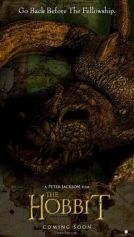

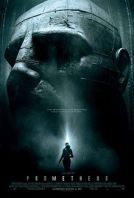


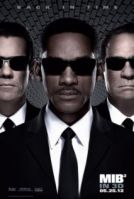
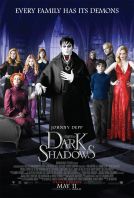









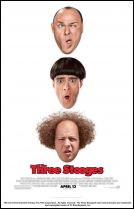

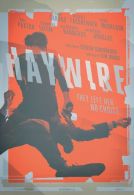
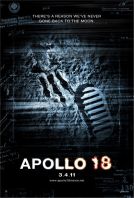




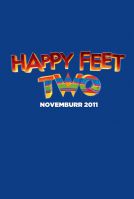



![Footloose [2011]](/images_movies/pt/1706_t.jpg)





